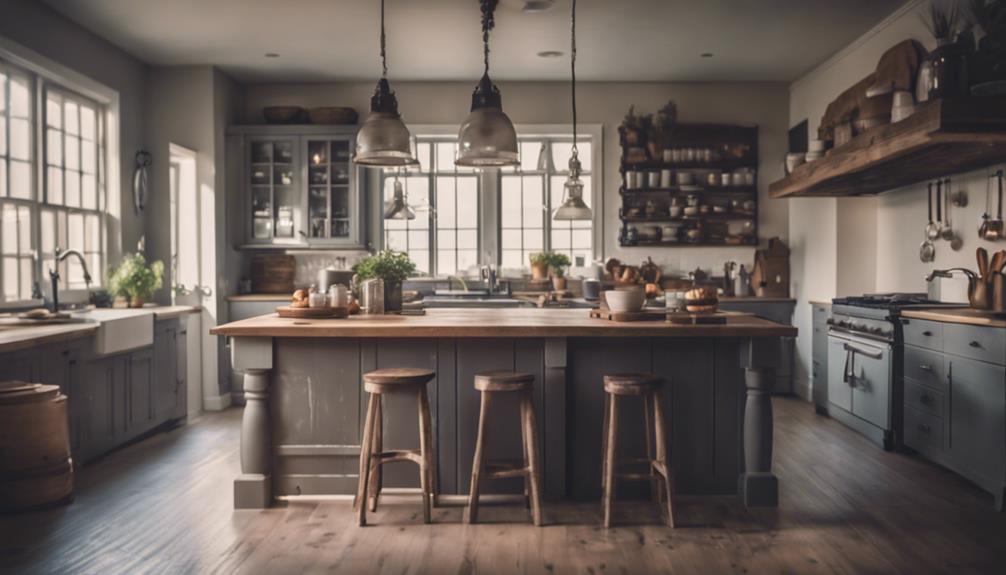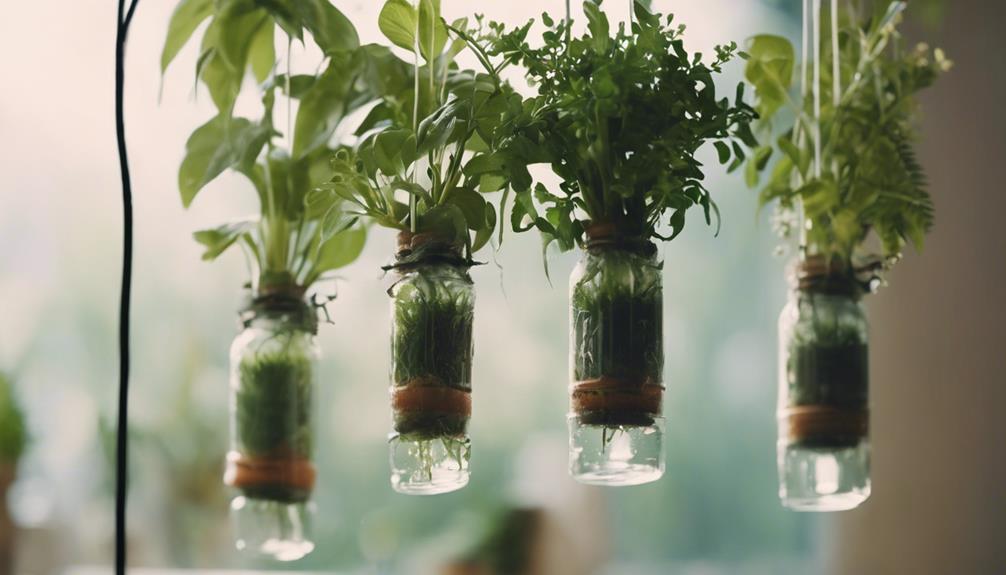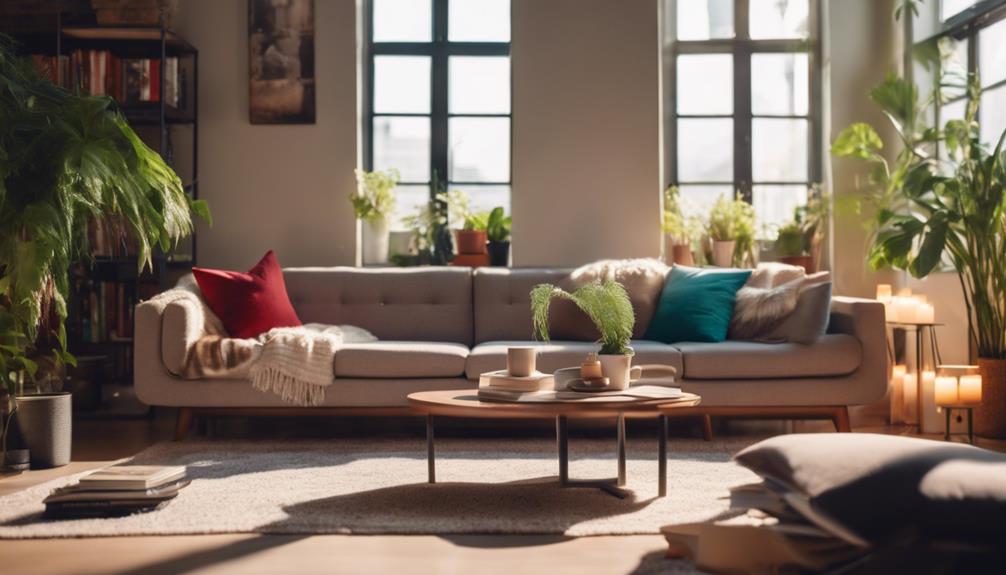This unique batik hack will completely change the look of your room using vibrant, handmade wall hangings. Begin with 100% cotton fabric and watercolor paints to create beautiful designs using the wax-resist technique. Melt wax and carefully layer colors to add depth and texture. Once your artwork is finished, either frame it behind glass or hang it as a tapestry. You can also use batik fabric to create distinctive cushion covers or table runners, bringing a touch of luxury to your space. Let your creativity flow, and you will discover more creative ideas to enhance your home decor even more.
Key Takeaways
- Create vibrant wall hangings using batik techniques to instantly add color and artistic flair to any room.
- Use batik fabric as table runners to introduce texture and unique designs to dining areas.
- Transform decorative pillows with batik patterns, providing a fresh, eye-catching focal point in your living space.
- Frame batik art behind glass to protect and enhance its intricate details, making it a stunning centerpiece.
- Incorporate batik elements in curtains or backdrops for a cohesive and colorful theme throughout the room.
Understanding Batik Art

Batik art is often celebrated for its stunning intricacy and vibrant colors, making it a popular choice for Indonesian decorative pillows that enhance living spaces.
This traditional textile dyeing technique allows you to explore your creativity by applying wax to fabric, which resists dye penetration in specific areas. You'll typically use 100% cotton fabric, as it absorbs colors effectively, ensuring your designs pop. The beauty of batik lies not just in its colors but in the technique itself, as you layer wax and dye to create depth.
You can start your batik journey with just one color, focusing on the details and intricacies of your design. By using colored wax made from melted old crayons, you can add unique hues to your fabric. White wax is perfect for preserving the original fabric color, allowing for contrasts that enhance your artwork.
As you experiment with the wax resist technique, remember that colors may lighten as they dry. This means you'll need to apply them carefully to keep your design intact.
Batik encourages personal interpretation, making it accessible to everyone. Whether you're tracing printed photos or sketching freehand, you'll find a fulfilling artistic outlet in this beautiful craft.
Materials You'll Need

Before diving into your batik project, gather the essential materials that will set you up for success. Start with 100% cotton fabric, as it absorbs color effectively and provides the right surface for your wax resist technique.
Consider incorporating elements like a Face Indonesian Decor Mask to inspire your designs, as these masks represent rich Indonesian cultural heritage and can enhance your creative process. For vibrant color applications, you'll need watercolor paints, along with inexpensive brushes that allow for easy and precise painting.
Next, secure some glass containers for melting wax safely; avoid using plastic or metal, as they can react poorly to heat. You'll also want old wax crayons, broken into pieces for color application, or opt for colored wax specifically designed for fabric dyeing. These colors work beautifully when applied correctly.
Don't forget to prepare your workspace. Use protective surfaces like plexiglass or plastic packaging to maintain a clean area, preventing unwanted wax spills during the process.
Having these materials at hand won't only streamline your project but also enhance your creative experience. By being organized, you'll find that your batik art comes together more seamlessly, allowing you to focus on making stunning designs for your room.
Preparing Your Workspace

Creating a dedicated workspace is essential for a successful batik project. A well-prepared area not only boosts your creativity but also enhances your efficiency. Consider incorporating elements of Balinese design aesthetics to create a serene and inspiring environment.
Let's go through the steps to set up your space effectively:
- Choose a clean, flat surface: Make sure it's stable for applying wax and pigments. Use protective materials like plexiglass or plastic packaging to prevent damage.
- Gather all essential materials: Collect 100% cotton fabric, watercolor paints, brushes, and glass containers for melting wax. This way, you minimize disruptions while working.
- Ensure adequate ventilation: It's vital when melting wax to avoid fume accumulation and maintain safety in your workspace.
- Organize your tools: Keep your materials within arm's reach to reduce clutter and streamline your workflow.
Additionally, have cleaning supplies ready, such as paper towels and warm soapy water, to quickly address spills or accidents that might occur during the process.
Creating Your Design

Creating Your Design
A thoughtful design is essential for your batik project, as it sets the tone for your entire artwork. Start by sketching a simple design, like a landscape or an abstract motif that reflects traditional Indonesian style home decor. If you're not confident in your drawing skills, consider tracing a printed photo. For your base material, choose 100% cotton fabric, as it absorbs color better.
Next, prepare your wax crayons by breaking them into smaller pieces for easier application. When creating your design, apply colored wax carefully to create a resist effect on the fabric. Make sure to layer the wax and watercolor in sequence to maintain the integrity of your design and prevent color bleeding.
You might also want to experiment with dampening the fabric before adding watercolor; this allows for smooth blending and enhances the vibrancy of your colors.
Remember, patience is key. Allow the wax to dry completely between layers. As you put in the time and effort, the final appearance of your artwork will emerge beautifully once all layers are added and the wax is removed.
Applying the Wax Resist

Applying the wax resist technique transforms your fabric into a canvas for vibrant designs. This method allows you to create intricate patterns that stand out beautifully, reminiscent of the rich cultural artistry found in traditional Indonesian decor masks.
To achieve the best results, make certain to follow these key steps:
- Melt the Wax: Confirm the wax is fully melted before application. This creates a smoother barrier on your fabric.
- Choose Your Wax Color: Use colored wax for bright designs, while white wax helps maintain the fabric's natural color beneath.
- Control Your Application: Apply the wax carefully to avoid unintended bleeding. Tools like brushes or stamps can help you manage where the wax goes.
- Let It Dry: Allow the wax to dry completely before adding any more layers of color. This step is essential for maintaining the integrity of your design.
Layering Colors Effectively

Once the wax resist technique is in place, you can start layering colors to bring your batik design to life. For the first time, you'll want to apply multiple thin layers of watercolor, allowing each layer to dry before adding the next. This method creates depth and richness in your design, similar to the intricate patterns found in Indonesian decor masks, which often depict local myths and folklore.
Be certain to dampen the fabric before applying watercolor; this helps the paint spread freely and blend beautifully with existing colors.
Consider using a tone-on-tone technique, where you apply similar shades to enhance your artwork's cohesiveness while maintaining subtle variations. Gradually darkening shades by building up colors prevents overpowering your lighter areas, leading to a balanced composition.
As you layer, maintain careful application of wax between colors to avoid color bleeding. This guarantees that each section of your design retains its intended shape and clarity.
Finalizing Your Artwork

How do you know when your batik artwork is truly finished? Finalizing your artwork is an essential step that guarantees your creation shines. Here are some key points to reflect on:
1. Check for Dryness: Make sure the wax has fully dried before applying any additional layers. This prevents color bleeding and maintains your design's integrity.
For inspiration, ponder how tropical villa plans emphasize natural light and open spaces, which can enhance the overall presentation of your artwork.
2. Patience with Layers: Remember, the final results only reveal themselves once all layers are complete. Take your time to build up colors gradually.
3. Color Harmony: Focus on blending different shades harmoniously. Incorporate various colors strategically to create depth and texture—darker shades should be added slowly to avoid overpowering lighter areas.
4. Add Personal Touches: Once you're satisfied with the colors, think about adding stitching or embellishments. These elements enhance the visual appeal and personalize your batik creation.
Displaying Your Batik Creations

Displaying your batik creations can transform your space into a vibrant reflection of your personal style. To enhance your room's aesthetic, consider framing your finished batik pieces behind glass. This not only protects your artwork but also showcases the intricate details and layering techniques you've mastered.
Incorporating elements from luxury tropical design aesthetics can elevate your display, making it a striking focal point in your room.
If you're going to create a dynamic display, hang batik fabric postcards on a string with clothespins or clips. This allows you to easily update the display as you produce new pieces.
You can also incorporate batik art into your home décor by using them as wall hangings, table runners, or decorative pillows. These elements infuse your space with a sense of creativity and warmth.
For a cohesive look, use batik fabric as a backdrop for shelving or as curtains. This not only adds depth and interest to your overall design but also creates a colorful theme throughout the room.
Inspiring Future Projects

As you enjoy showcasing your batik creations, it's natural to feel inspired to take on new projects that push your artistic boundaries. Embracing batik techniques can open up a world of creative possibilities for your home decor, much like the unique designs found in traditional Indonesian housing. You can incorporate batik into various aspects of your space, from cushion covers to wall hangings, adding a personalized and cultural touch to your home. By exploring genius batik design hacks, such as using wax-resist patterns on lampshades or upcycling fabric scraps for custom table runners, you can effortlessly infuse your living environment with both creativity and functionality. These small yet impactful changes not only showcase your artistry but also celebrate the rich heritage behind batik craftsmanship.
Here are a few ideas to spark your imagination:
- Vibrant Wall Hangings: Transform simple fabric into stunning wall art that reflects your personality and style.
- Unique Cushion Covers: Experiment with wax-resist designs to create eye-catching patterns that enhance your living space.
- Layered Table Runners: Utilize color layering to add depth and texture, turning your dining table into a focal point.
- Sustainable Art Projects: Repurpose common household items in your batik process, making art accessible and eco-friendly.
Engaging in these creative projects not only beautifies your space but also fosters a sense of community.
By sharing your work online, you can inspire others and potentially collaborate on exciting new endeavors.
Frequently Asked Questions
What Is the Batik Effect?
The batik effect involves using wax to resist dye on fabric, creating intricate patterns. You can layer colors for vibrant designs, transforming ordinary textiles into stunning art pieces that reflect your unique style and creativity.
How to Do Batik Painting?
To do batik painting, start by sketching your design on cotton fabric. Apply melted wax to outline your design, then layer watercolor paints, ensuring each layer dries before adding more for depth and vibrancy.
What Paint to Use for Batik?
For batik, you'll want to use watercolor paints, as they blend beautifully on damp fabric. If you're on a budget, try repurposing old wax crayons for vibrant color without spending extra. Just make sure your wax is melted!
What Is Batik Painting for Kids?
Batik painting for kids combines creativity with cultural heritage. You'll watch their excitement grow as they layer colors and wax, transforming plain fabric into vibrant art. It's a fun way to develop skills and express themselves!
Conclusion
By transforming batik art into your home decor, you're not just adding color; you're weaving stories into your space. Each stroke of wax and splash of dye symbolizes your creativity and individuality, turning ordinary walls into vibrant canvases of expression. As you display your creations, let them remind you that your environment can reflect your spirit. Embrace this artful journey, and watch as your room evolves into a sanctuary that inspires and uplifts every moment of your day.









